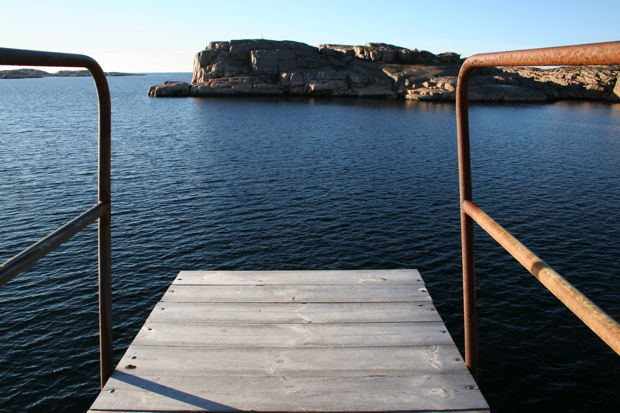Could I just skip the risk, please?
That’s my desire. Could I please accomplish what God’s calling me to do without experiencing fear? Could I get there without taking risks or facing my tremendous fear of failure?
Unfortunately, I think the answer is no. Part of living out the callings that God has for us is living with courage and taking risks in our lives.

I’ve been reflecting on this idea of risk for a couple of years now. And my reflection hasn’t been an intellectual one concerning the definition of terms and how much risk is appropriate. Rather, it’s been a growing conviction that God is calling me to take more risks in my life. I’m not sure exactly what that means, but recently the word “risk” has taken a backseat in my reflections to the word “courage.” It takes courage to face risk. And I am experiencing a distinct lack of courage. But courage is an easier concept to get excited about than risk. So, I tacked up some art in my workspace to inspire me. One is simply an artistic rendering of the word “courage.” Another is a common quote, “It takes courage to grow up and become who you really are.”
In addition to these visual inspirations, I’ve been learning about courage from others. Psychologist Amy Cuddy of Harvard Business School describes the “imposter syndrome” in her TED talk. As a graduate student, she felt like she didn’t belong and wanted to give up. Maybe you’ve experienced that as well. I certainly have. It feels easier to give up than to face the fear of failure or to feel like an imposter. But it’s quite common to experience imposter syndrome, particularly among women. Cuddy addresses one way to keep going — fake it. Her TED talk explains “power poses” that actually help us feel more powerful and change the way we deal with scary situations. Her final advice is to keep taking these risks until you don’t feel like a fraud anymore. As you grow and develop, you will eventually realize that you have changed — you are no longer faking it because you have become a different person.
Another way to walk forward with courage is to develop habits that make life situations feel less risky. Charles Duhigg’s The Power of Habit describes how swimmer Michael Phelps developed an elaborate pre-race routine that never varied. Because the routine always went as expected, it felt like a series of “small wins.” These habits made the race seem like just another part of the routine. Duhigg argues that if you develop a habit of preparing for a stressful situation, you will also face fear habitually. He recounts how Phelps set a world record in the 2008 Olympic butterfly race despite his leaky goggles masking any sight. Facing a crisis, he leaned into his habits.
In addition to practicing power poses and developing habits to follow, we must recognize the value of courage in our lives. Brené Brown’s work — shared in both her TED talks and her book, The Gifts of Imperfection — on vulnerability, shame, and wholeheartedness is also related to risk and fear. Brown describes “wholehearted” people as those with courage, compassion, and connection, defining courage as “telling the story of who you are with your whole heart.” Sounds like the quote in my office, doesn’t it? Because courage requires a willingness to be imperfect, it leads to compassion: for ourselves and for others. Brown found that wholehearted people are willing to be vulnerable because they realize it’s necessary to be fully alive. When we protect ourselves from bad feelings (like fear), we also block off the good feelings as well. Brown says that “vulnerability is the birthplace of joy and creativity.” In our willingness to be authentic and courageous about who we are, we do risk failure and rejection, but we gain connection and joy.
Finally, I recently watched a friend move her family across the country to answer God’s call in a new place. It was a risk to move somewhere new without a place to live, a job for her husband, or a buyer for their house. All this risk reminded her of the scene from “Indiana Jones and the Last Crusade” where Indiana must take a step before the bridge appears. And it does seem like sometimes God works that way. In Acts 3, it is after Peter pulls up the lame man that his legs become strong. Peter took a risk that God would heal.
So I think all this means I can’t skip risk. I can’t bypass fear of failure. And I want to be a woman of courage. I want to embrace the calling that God has for me and to tell the story of who God made me with my whole heart. I want to risk pain and failure in order to experience joy and connection. And I am not alone. I trust that God is holding me, guiding me, and growing me through it all. Now, off to do some power poses.